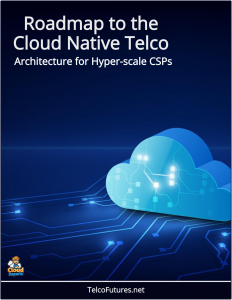Accelerating Telco Digital Transformation with Cloud Native OSS/BSS
Modernizing monolithic legacy OSS/BSS to an elastic, microservices-based architecture is central to the Cloud Native Telco journey.
 There are two distinct transformation benefits the shift to Cloud Native should deliver for telcos.
There are two distinct transformation benefits the shift to Cloud Native should deliver for telcos.
One is to achieve a Cloudified hyper-scale infrastructure and the second is to enable more rapid and agile development of new digital services.
‘Cloud Native OSS’ highlights that there are different layers to the Cloud Native transformation of Telco networks relevant to realizing these different goals.
OSS/BSS
Understandably most of the focus is at the core infrastructure level where Kubernetes is used to implement CNFs to containerize and hyper-scale network functions, however equally we are seeing the principles of microservices software architecture et al being applied to their business systems.
For example Amdocs are applying the microservices architecture to the OSS/BSS layer, creating Microservices360 (MS360), an end-to-end carrier-grade accelerated microservices development platform for its own new generation of products, with a full SDK for cloud-native code development and deployment.
Other vendors like Accolite and Intraway are also fully embracing the trend. Accolite describes the benefits of their Cloud Native OSS architecture and Intraway are offering a SaaS-based OSS/BSS built on Cloud Native principles including ‘ChatOps’ features.
Telecom Review describes how Nexign has enabled Megafon to build a ‘microservices factory‘ that underpins their strategy to act as a digital ecosystem platform, one providing services that may vary from ordering a cab to delivering groceries through AppleMusic subscriptions. It sits in the middle layer between the unified billing foundation and the front-end platform on the operator’s side and leverages DevOps, CI/CD automation and cloud deployment.
In the feature video from the TMF an expert panel sets the overall strategic context for this type of transformation, where T-Mobile in the Netherlands went through a process of merging three companies. Managing this type of complexity is the day to day challenge for adopting these new approaches, where for example they had to migrate the new customers on to the single main core rather than operating multiple silos.
Cloud-Native 5G, MEC and OSS/BSS/OTT Telco with Apache Kafka and Kubernetes
In his webinar presentation Kai Waehner, Field CTO for Confluence, provides a detailed review of the role of Apache Kafka and Kubernetes in these Cloud Native OSS/BSS scenarios.
From 1m:18s Kai dives into the primary use case 5G, and how like China Mobile describes the critical feature is network slicing where different SLAs can be offered to different services and customers.
From 5m:25s he focuses on the core capability of Event Streaming that Kafka enables, describing that it is the equivalent paradigm shift for data as Cloud Native is for computing and applications, defined primarily by the distinction of ‘data in motion’ versus data at rest, where it’s treated as a continuous stream of events.
He explains this through an example of telemetry data, from syslogs, firewalls, etc., that is processed and normalizing, which then enables proactive networking monitoring and incident response, and event reporting. The key point is this is ‘live’, real-time data, what Apache Kafka is specifically intended for.
At 9m:20s he demonstrates how it can be applied in Telco Hybrid Cloud models, where there is both a public Cloud SaaS use of Kafka combined with on-premise instances, distributed across data centres and edge locations like towers and vehicles. At 10m:50s Kai shows how Kafka can integrate multiple legacy business systems.
This is the key insight. At 12m:04s he maps this capability to the core Cloud Native Telco scenario, where Kafka can play a key role in enabling the transformation from a monolithic and proprietary legacy environment to one of an elastic, microservices architecture.



